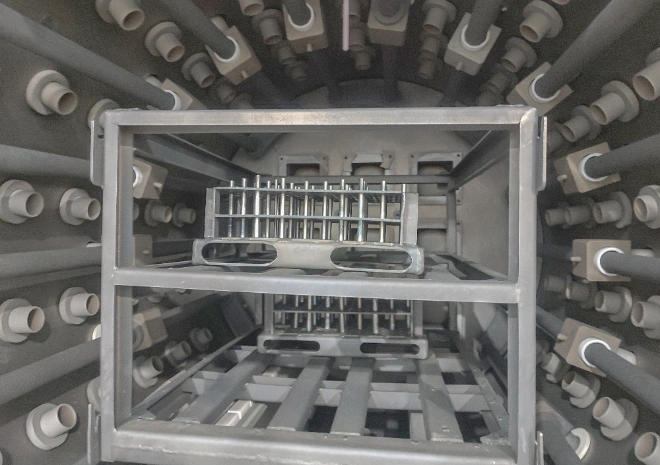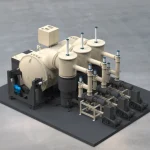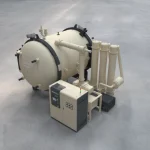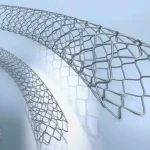What Is Vacuum Environment?

1.Basic Concepts of Vacuum
Definition of Vacuum
In vacuum technology, “vacuum” refers to a gas state where the pressure is lower than one atmospheric pressure in a given space, indicating a relatively thinner gas state compared to normal atmospheric conditions.
Measurement of Vacuum Degree
Vacuum degree is an objective measure of gas thinness, typically represented by gas pressure. The SI unit for pressure is Pascal (Pa), with 1 Pa = 1 N/m². Other common units include Torr, mmHg, mbar, and kg/cm². The relationship between Torr and Pa is 1 Torr = 1 mmHg = 133.322 Pa, and 1 Pa = 7.5 × 10⁻³ Torr.
Classification of Vacuum Regions
Rough Vacuum: (760–10) Torr
Low Vacuum: (10–10⁻³) Torr
High Vacuum: (10⁻³–10⁻⁸) Torr
Ultra-High Vacuum: (10⁻⁸–10⁻¹²) Torr
Extremely High Vacuum: < 10⁻¹² Torr
Applications vary by region; for example, vacuum cleaners operate in rough vacuum, thermoses and light bulbs in low vacuum, and vacuum switch tubes in high vacuum.
2.Insulation Characteristics of Vacuum Gaps
Comparison with Air Breakdown
In air, breakdown occurs due to a snowballing ionization process where free electrons collide with gas molecules, creating more electrons and ions. In a vacuum, with few gas molecules, such collisions are rare, requiring extremely high voltages for field emission or other phenomena to cause breakdown. Theoretical electric field strength for breakdown is > 10⁸ V/cm, but practical values are lower due to factors like electrode surface roughness.
Insulation Strength in High Vacuum
Vacuum interrupters typically operate at 10⁻³–10⁻⁶ Pa, where insulation strength far exceeds that of air at 1 atm, SF₆, or transformer oil. This allows for compact electrical gaps; e.g., a 12 kV vacuum interrupter has a触头 (contact) gap of only 8–12 mm.
3.Main Factors Affecting Vacuum Insulation Level
Electrode Geometry
Electrode shape influences electric field distribution; sharp edges or small radii can cause localized field concentration, leading to breakdown.
Larger electrode areas reduce breakdown voltage due to increased discharge probability.
Gap Distance
For short gaps (≤5 mm), breakdown voltage increases linearly with distance. Beyond 20 mm, the increase slows, and multi-gap designs become more effective.
Short-gap breakdown is primarily field-emission-driven, while long-gap breakdown is due to particle effects.
Electrode Material
Breakdown voltage correlates with material hardness and mechanical strength. Quenched steel electrodes show an 80% increase in breakdown voltage.
Higher melting points, specific heats, and densities generally improve breakdown voltage.
Vacuum Degree
Above 10⁻² Pa (10⁻⁴ Torr), breakdown voltage stabilizes as gas collisions no longer contribute. Below this, increasing pressure reduces breakdown strength.
Vacuum interrupters maintain adequate insulation at > 10⁻² Pa.
Electrode Surface Condition
Oxides, impurities, and metal particles on electrode surfaces lower breakdown voltage.
High-current interruptions roughen electrode surfaces, further reducing breakdown voltage.
Aging Effect
Voltage Aging: Repeated discharges smooth electrode surfaces by burning off microscopic protrusions, impurities, and defects, increasing breakdown voltage.
Current Aging: Less effective for interrupter contacts, as arc damage negates aging benefits.
4.Summary
Vacuum environments are characterized by low gas pressure, with insulation properties far superior to air at atmospheric pressure. Key factors influencing vacuum insulation include electrode geometry, gap distance, material properties, vacuum degree, surface condition, and aging effects. Understanding these factors is crucial for designing reliable high-voltage vacuum devices.
5.Frequently Asked Questions (FAQ)
Q: What defines a vacuum environment?
A: A vacuum is a gas state with pressure below one atmospheric pressure, categorized into rough, low, high, ultra-high, and extremely high vacuum based on pressure ranges.
Q: How is vacuum degree measured?
A: Vacuum degree is measured by gas pressure, with units including Pascal (Pa), Torr, mmHg, mbar, and kg/cm². 1 Torr = 133.322 Pa.
Q: Why is vacuum insulation stronger than air?
A: In a vacuum, few gas molecules exist, preventing the ionization cascade seen in air. Breakdown requires extremely high voltages for field emission.
Q: What factors affect vacuum breakdown voltage?
A: Electrode geometry, gap distance, material properties, vacuum degree, surface condition, and aging effects.
Q: How does electrode shape influence breakdown?
A: Sharp edges or small radii concentrate electric








